Sunflowers are a beautiful addition to any garden, known for their bright and cheerful appearance. They can grow to impressive heights and are relatively easy to cultivate with the right care and attention.
This guide is essential for anyone seeking to improve their gardening skills or simply enjoy the beauty of these flowers.
Whether a beginner or an experienced gardener, learning to grow stunning sunflower blooms will bring vibrant color to your outdoor space.
The following tips will help your sunflowers thrive, providing strong, healthy flowers that stand tall and beautiful throughout the season.
#1 – Choose the Right Variety
Selecting the perfect sunflower variety is crucial for producing beautiful flowers, as different types cater to various preferences and needs.
For instance, the eye-catching blend of red, orange, and yellow petals of the Helianthus annuus ‘Autumn Beauty’ variety is well-loved. This type is perfect for garden backgrounds as it can grow up to six feet tall.
For those interested in container gardening or with limited garden space, compact varieties like “Topolino” are ideal. These petite sunflowers can reach a height of just 16 inches and exhibit vibrant, single-petaled flowers. Despite their small size, they are prized for their branching capability, resulting in abundant blooms.
Branching sunflowers such as ‘Soraya’ or ‘Strawberry Blonde’ produce multiple stems and continuously bloom throughout the season, making them a great choice for gardeners seeking a natural, relaxed look and more flowers to enjoy.


For cut flower gardens, it’s advisable to choose varieties with sturdy stems and multiple blooms, such as the ‘Rogue Royale.’ This sunflower showcases true red petals and produces flowers up to 6 inches in diameter, adding striking color to any bouquet.
Choosing the right variety based on garden space, desired height, and flower needs can make a big difference in achieving stunning sunflower blooms.
#2 – Plant in Full Sun
Sunflowers need at least six to eight hours of direct sunlight daily to ensure they get the energy needed for strong growth and beautiful blooms.
Choosing the right spot is crucial. Sunflowers thrive in areas that receive full sunlight throughout the day. Avoid shady locations as they can cause weak stems and fewer flowers.
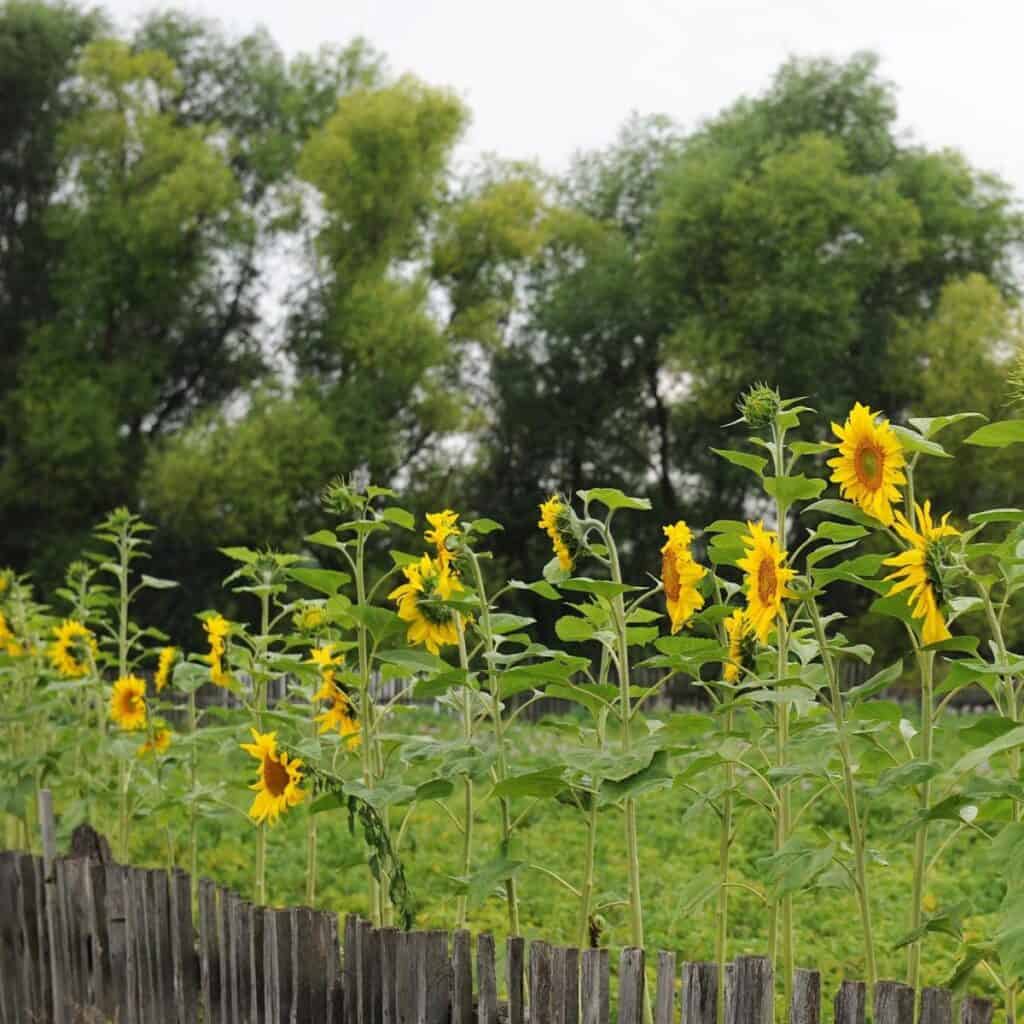

Sunlight encourages healthy, rapid development when growing sunflowers. The plants produce more energy due to abundant sunlight, resulting in larger and more colorful blooms.
Make sure trees or buildings will not shade your chosen site. This ensures they receive the sunshine required for healthy growth. Also, pick a sunny location with soil that drains properly. Although they can withstand some drought, sunflowers prefer dry soil to soggy ones.
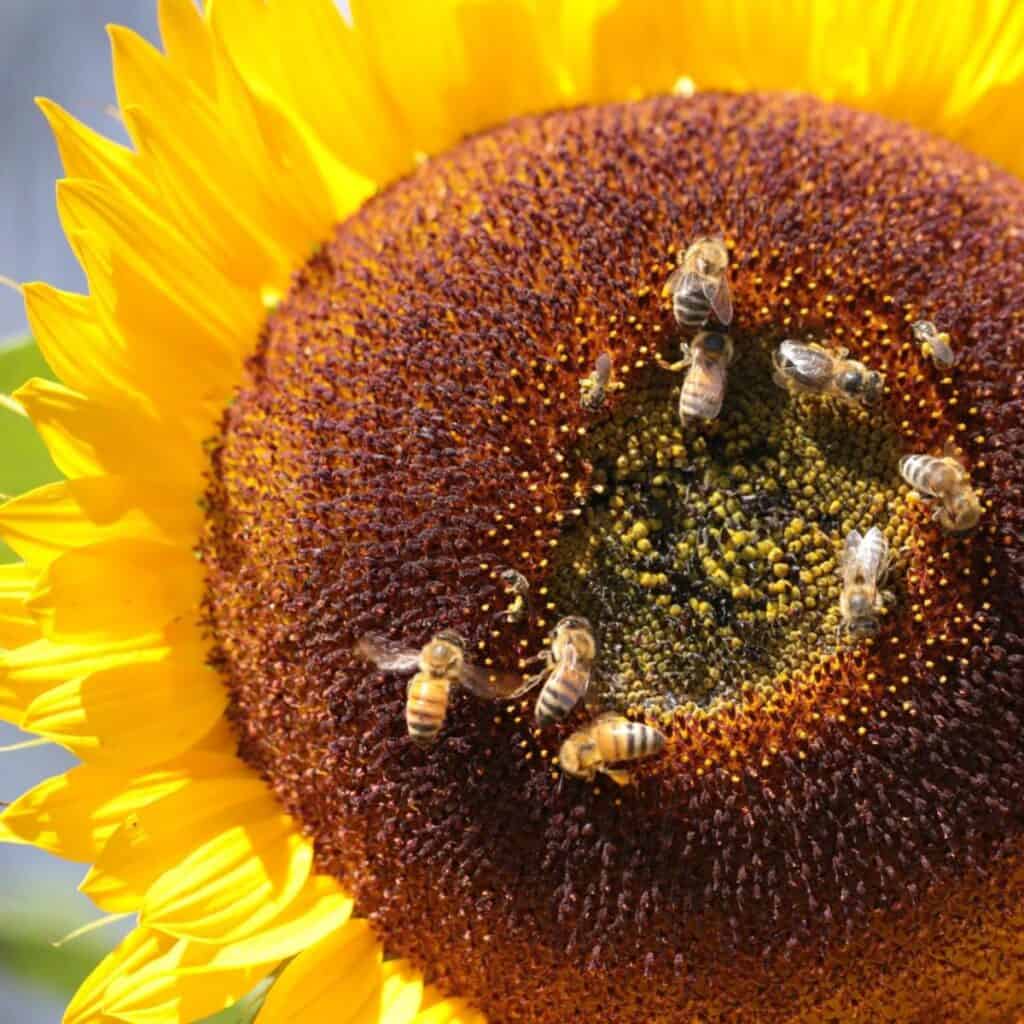

Sunflowers will produce beautiful, resilient blooms throughout the entire season by placing them in full sunlight. Healthy sunflowers also yield better-looking and more productive seeds, offering a dual benefit to your landscape.
#3 – Sow Seeds Directly
Sow sunflower seeds directly into the ground for the best results. This method helps the plants grow strong roots and adapt better to their environment. Sunflowers thrive when they are not disturbed by transplanting.
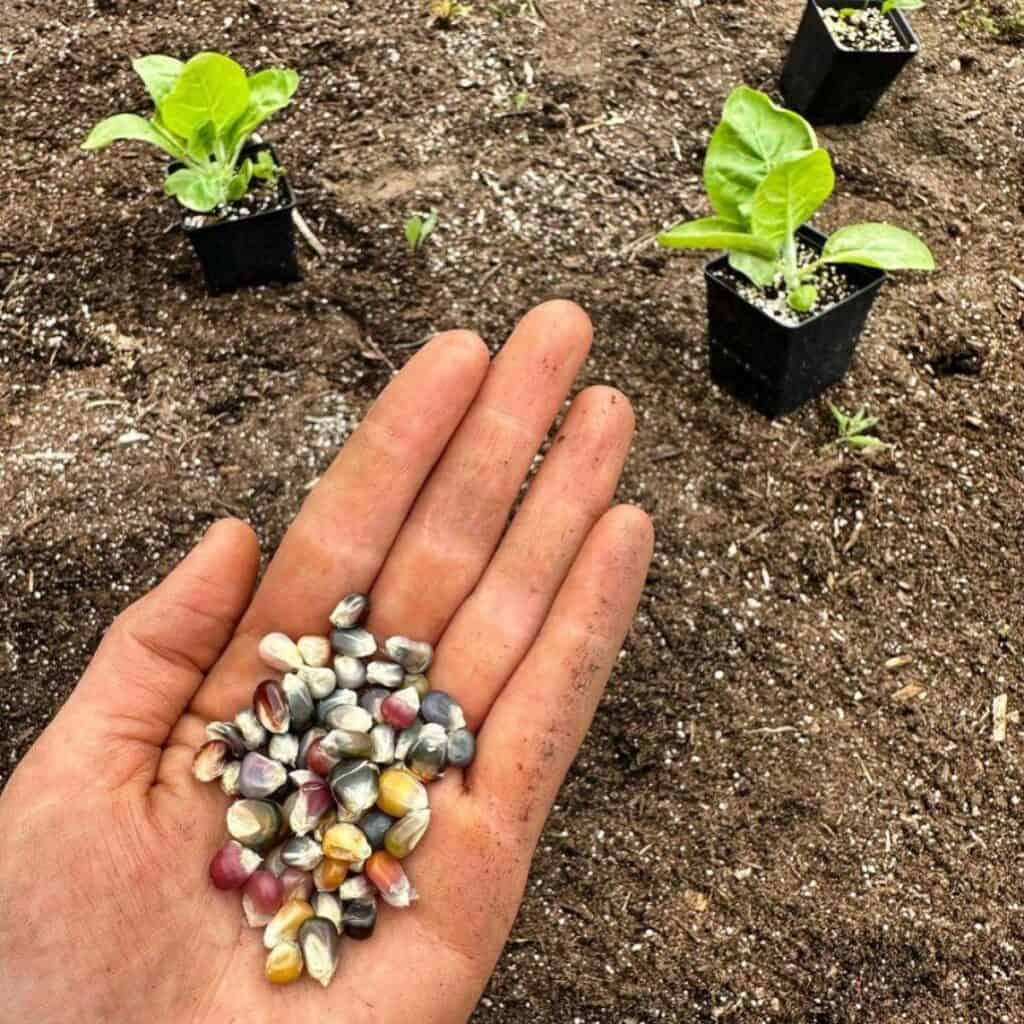

Plant the seeds about 1 inch deep into well-drained soil. Space the seeds 6 to 12 inches apart, depending on the sunflower variety. If the packets lack instructions, planting the seeds about an inch deep is a good rule.
Planting two or three seeds in each spot can increase the likelihood of germination. Once the seedlings develop their second set of leaves, thin them out, leaving the strongest one to grow.


When thinning, do not disturb the roots of the remaining seedlings, as this can cause stress and hinder growth, resulting in poor flower development.
After planting, thoroughly water the seeds and moisten the soil until germination occurs. Sunflowers require ample sunlight, so choose a location that receives at least six hours of direct sunlight daily.
Adding a layer of mulch can help retain soil moisture and prevent weed growth. Mulch also protects young seedlings from temperature fluctuations.
#4 – Space Plants Properly
Sunflowers need ample space to grow and blossom effectively. The correct spacing is crucial to ensure that each plant receives sufficient sunlight, nutrients, and air circulation. When sowing sunflower seeds, it’s important to consider specific spacing requirements.
For common sunflower varieties, plant the seeds 12 to 18 inches apart. Larger sunflower cultivars require even greater distances between plants, generally between 24 and 36 inches, allowing the plants to thrive without overcrowding.


A popular method is to plant sunflower seeds in clusters. To maintain the proper spacing, plant two to three seeds in each hole and then thin out the weaker sprouts, allowing the strongest plants to flourish.
Some experts recommend tighter spacing, as close as 6 inches apart, when growing sunflowers as a dense border or for cut flowers. This can result in smaller heads, perfect for bouquets, without compromising plant health.
Remember, adequate spacing is essential to prevent disease and pests. Good airflow around each plant contributes to their overall health. Properly spaced sunflowers will reward you with stunning blooms and robust growth.
#5 – Water Regularly
Sunflowers thrive with consistent moisture. Water the soil around the plants rather than the leaves to prevent disease. Aim to keep the soil damp, avoiding waterlogging.
A good rule is to provide about 2 gallons (7.6 L) of water per week. Adjust based on weather conditions. In hotter climates, you might need to water more frequently.
Use lukewarm water to avoid shocking the roots. Set a bucket at the base of the plants to let the water seep slowly into the soil.
Check the soil regularly to ensure it stays moist.


Fresh water should be provided to sunflowers in vases every two to three days. Cutting the stems at an angle can enhance water absorption and help the blossoms stay vibrant and fresh.
To save water, consider installing effective watering systems. These systems can greatly benefit drought-prone locations. Thanks to efficient mechanisms, water is guaranteed to reach the roots directly and wirelessly.
Keeping an eye on the moisture content will help prevent the stems from thinning and weakening. This will keep the heads of sunflowers healthy and upright. Proper irrigation is necessary to produce beautiful blossoms.
#6 – Mulch to Retain Moisture
Mulching is necessary to keep the soil moist around sunflower plants. Sunflower development depends on the soil remaining consistently moist, which can be achieved using organic mulch such as shredded bark, compost, or straw.
Mulch acts as a physical barrier that prevents weed growth, creating a healthier growing environment for sunflowers by reducing competition for nutrients and water.


Mulch helps to minimize the need for frequent watering during hot and dry weather. Sunflowers require regular moisture to maintain their fast growth and vivid blooms, which is ensured by keeping the soil cold and damp.
The organic mulch enriches the soil with nutrients as it decomposes. This natural improvement in the soil helps sunflower plants grow.
Applying mulch around the base of the plants can stabilize soil temperature. This helps protect sunflowers from temperature fluctuations that could stress the plants and affect their growth.
Using mulch is a straightforward way to enhance sunflower health and appearance. It simplifies garden maintenance while providing substantial benefits to the plants.
#7 – Stake Tall Varieties
It’s important to stake tall sunflower varieties to keep them from toppling over. These sunflowers can grow very tall, sometimes reaching heights of over 10 feet, making them prone to bending or breaking, especially in windy conditions.
When staking, opt for a sturdy wooden or metal stake at least five feet tall to provide ample support. Position the stake a few inches from the base of the plant, being careful not to damage the roots.


Secure the sunflower to the stake using soft ties. This prevents the stem from being constricted as it grows. Tie the plant loosely, allowing some movement but supporting it against strong winds.
Use soft ties to secure the sunflower to the stake. This prevents the stem from getting constricted as it grows. Make sure to tie the plant loosely, allowing for some movement while still providing support against strong winds.
Staking also helps support the weight of large sunflower heads. Heavy heads can cause the stem to bend, but a well-secured stake will keep the plant upright.
For more detailed guidance on selecting the right stake, visit how to support sunflowers.
#8 – Feed with Balanced Fertilizer
Use a balanced fertilizer to ensure the sunflowers receive the necessary nutrients. A fertilizer with an equal ratio of nitrogen (N), phosphorus (P), and potassium (K), such as 10-10-10 or 20-20-20, is effective in supporting the plant’s overall growth.
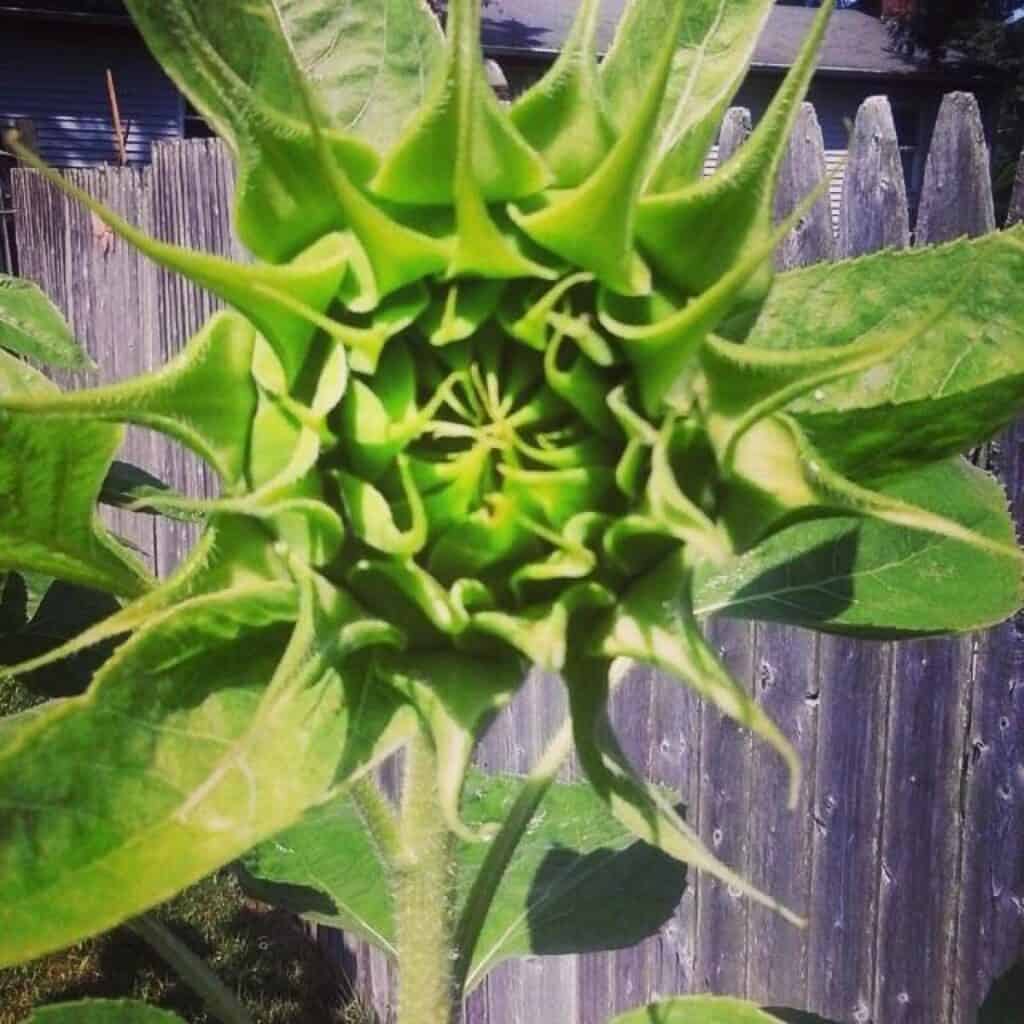

Before planting, apply the fertilizer to the soil to ensure the availability of nutrients as the seeds begin to germinate.
To promote healthy, tall plant growth, give the sunflowers another round of balanced fertilizer when they are about 6 inches tall.
Select fertilizers that facilitate the growth of roots. Strong roots are necessary for sunflowers to grow tall and produce enormous blooms, and phosphorus plays a key role in this process. Products with a 5-10-10 ratio or slightly higher phosphorus content may be advantageous.


In addition to promoting healthy foliage, well-balanced fertilizers contribute to developing vibrant flowers.
Sunflowers require regular feeding to stay strong and healthy. This technique produces gorgeous sunflowers that add color and cheer to any landscape. For more specific instructions, see our comprehensive guide on fertilizing sunflowers.
#9 – Watch for Pests
Sunflowers are beautiful, but they can also attract pests that pose a threat to their blooms. Identifying these pests early is crucial to keeping your plants healthy.
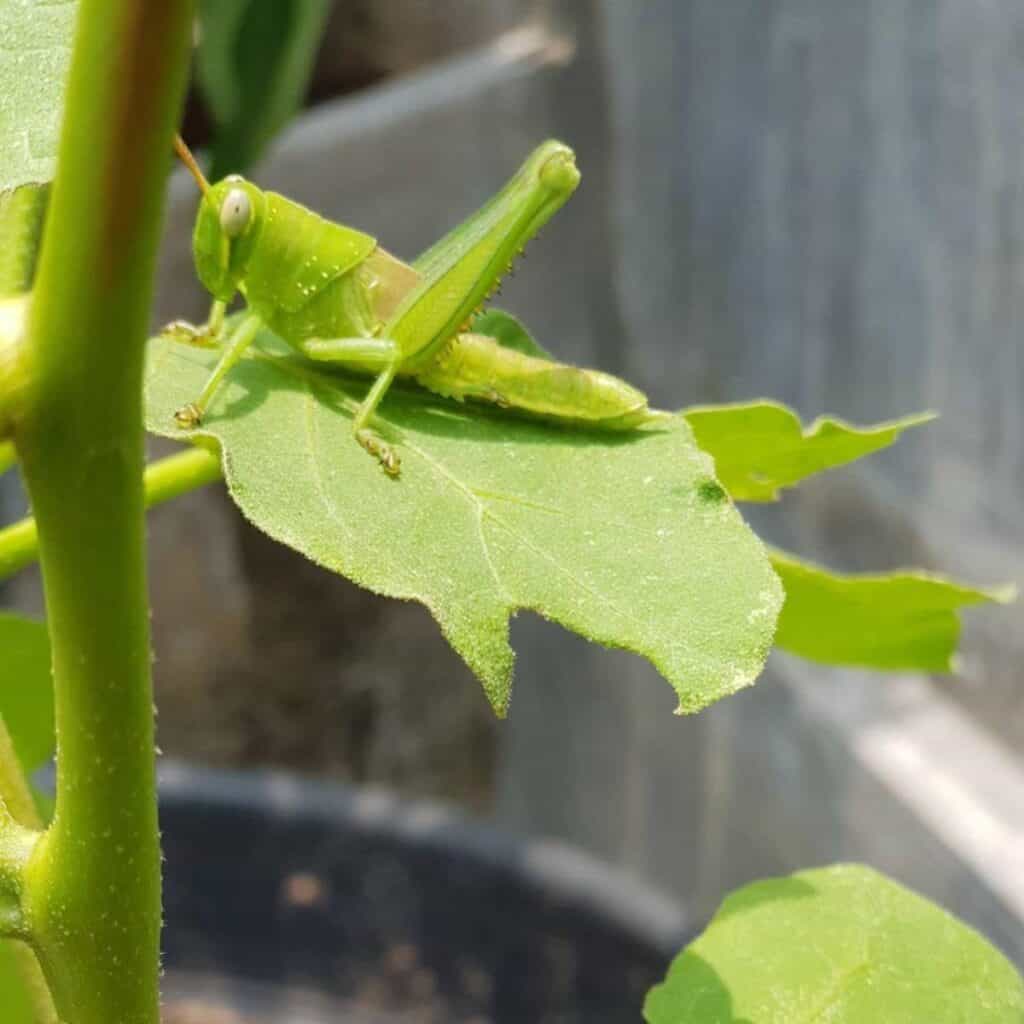

Cutworms are a common problem. Their larvae can be brown, gray, tan, green, or black and severely damage young plants. Regular inspection can help you spot these pests before they cause significant harm.
The sunflower moth is another pest to watch out for. The adult moths lay eggs on the leaves, and their larvae feed on seeds and flowers, leading to damaged seeds and discolored petals. A practical control method is to handpick and destroy the larvae.
Aphids are tiny, sap-sucking insects that can cause illness and weaken plants. They often form a cluster on the leaf undersides. Aphid populations can be organically managed by introducing beneficial insects such as ladybugs.


Wireworms, the larvae of click beetles, are highly destructive. They feed on the roots of sunflower plants in the soil. Crop rotation and good soil management can lower their population.
And lastly, beware of boll weevils. Although their primary prey is cotton, they can infest sunflowers by eating the buds and blooms of the plant. These pests can be avoided by exercising caution and acting quickly to protect your sunflower blossoms.
For more on managing common sunflower pests, visit this guide.
#10 – Prune for More Blooms
Pruning sunflowers is essential for encouraging more blooms. By removing certain parts of the plant, you can direct its energy towards producing more flowers.
Start by cutting back side shoots that compete with the main stem. Make clean cuts just above where the side shoots start. Avoid cutting too close to the main stem to prevent damage.


Keep a watch out for fresh side branches as the sunflowers mature. Remove these immediately to ensure the plant concentrates on blooming rather than unneeded development.
Early June is the ideal time to prune. The plant can use less energy by focusing on new growth instead of dead or dying foliage.
After pruning, place the cuttings in a compost pile or bin. Do not dispose of them in the ordinary trash, as this may attract pests.
Ideal Growing Conditions
Sunflowers thrive in specific soil, sunlight, and temperature conditions. Understanding these requirements is key to achieving beautiful and healthy blooms.


Soil Requirements
Sunflowers prefer well-draining soil to prevent root rot. The ideal soil is nutrient-rich, with a pH range of 6.0 to 7.5. Adding compost or aged manure can improve soil fertility and aeration.
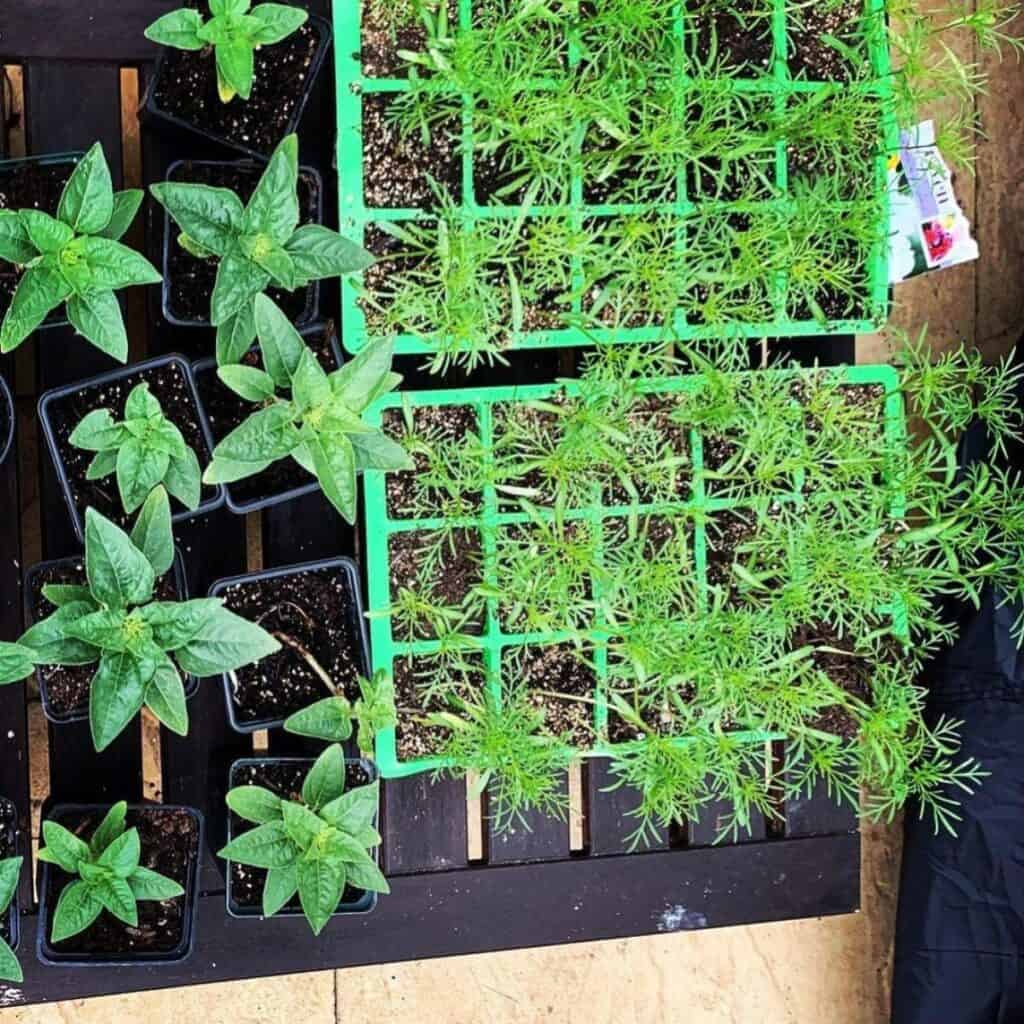

For best results, plant sunflowers where the soil is loose and friable. Avoid soil that is too compact or heavy with clay. Loosen the soil to at least 2 feet deep to allow the roots to spread out and establish a strong anchor.
Sunlight Exposure
Sunflowers require at least 6 to 8 hours of direct sunlight daily. They thrive in full sun, which promotes strong growth and vibrant blooms.
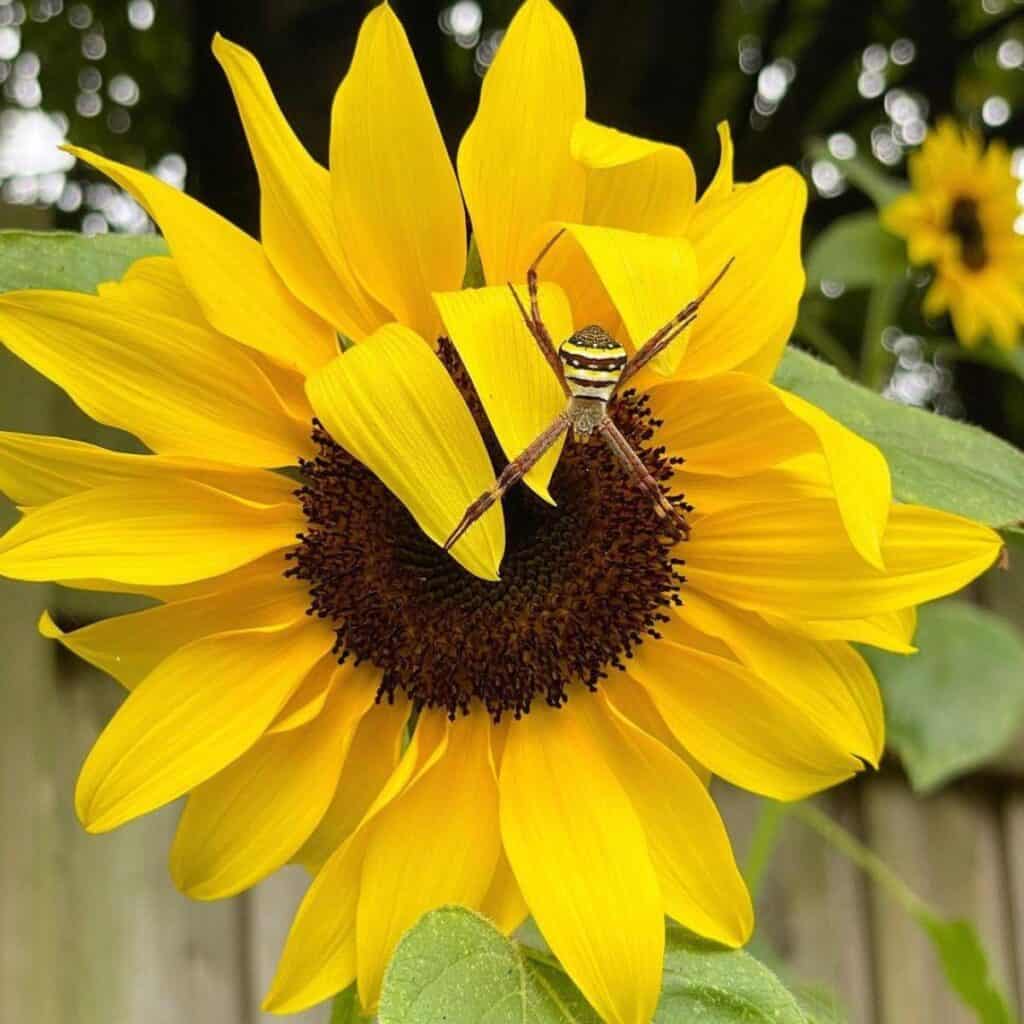

Position them in an open area where they can get ample light throughout the day. Ensure nearby structures or trees do not cast shadows on the plants. More sunlight produces taller stems and larger flower heads, so choose a sunny spot for best results.
Temperature and Humidity
Sunflowers are warm-season plants that grow best between 70°F and 78°F. They can tolerate various conditions, but extreme temperatures may affect their growth.
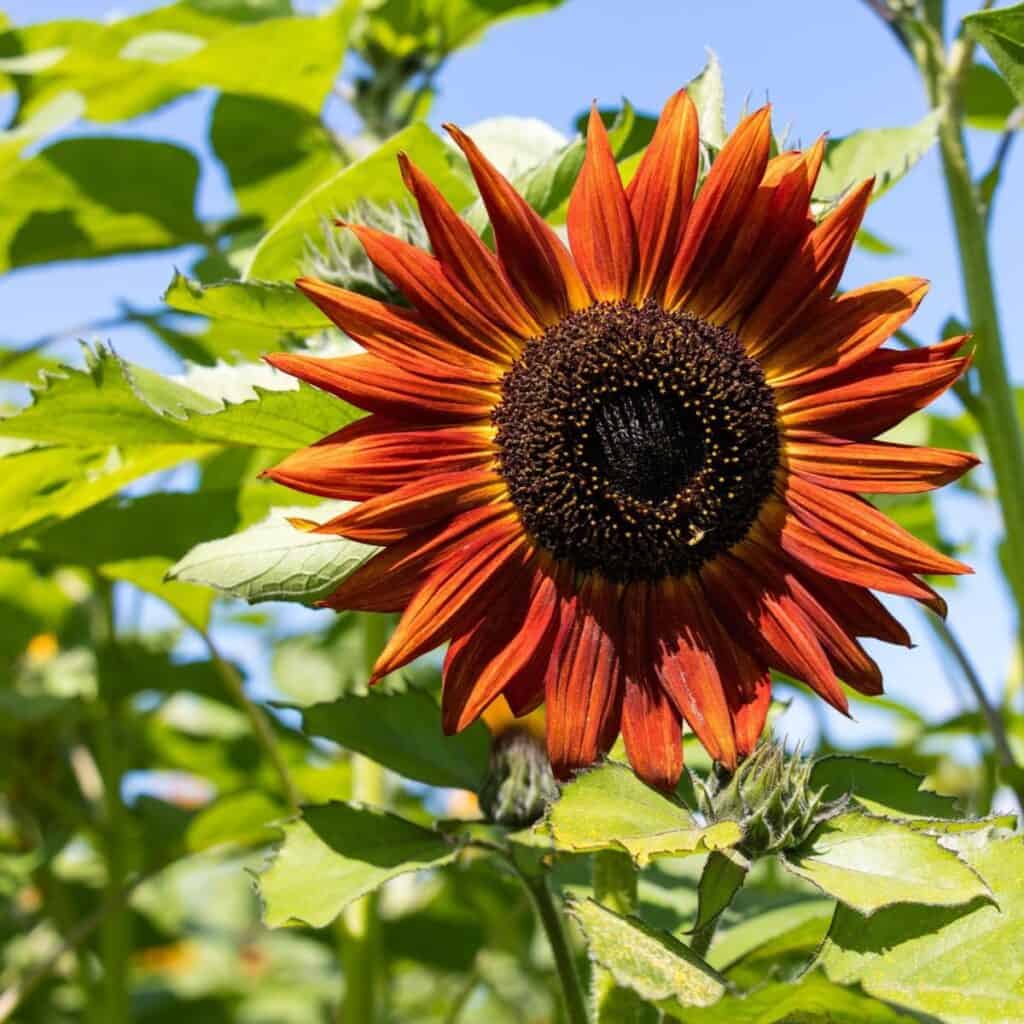

Plant them in mid to late spring, when the danger of frost has passed. Ideal growing conditions also include moderate humidity levels. While sunflowers are drought-tolerant, regular watering during dry spells ensures steady growth.
Watering Techniques


Proper watering is key for robust and vibrant sunflowers. Focusing on the timing, frequency, and watering methods ensures healthy growth and strong stems.
Frequency and Timing
Sunflowers need consistent watering, especially during dry spells. Water deeply once a week to ensure the moisture reaches the roots. In hot weather, this might increase to twice a week.
Water best in the morning or late afternoon, avoiding the hottest part of the day to minimize evaporation.
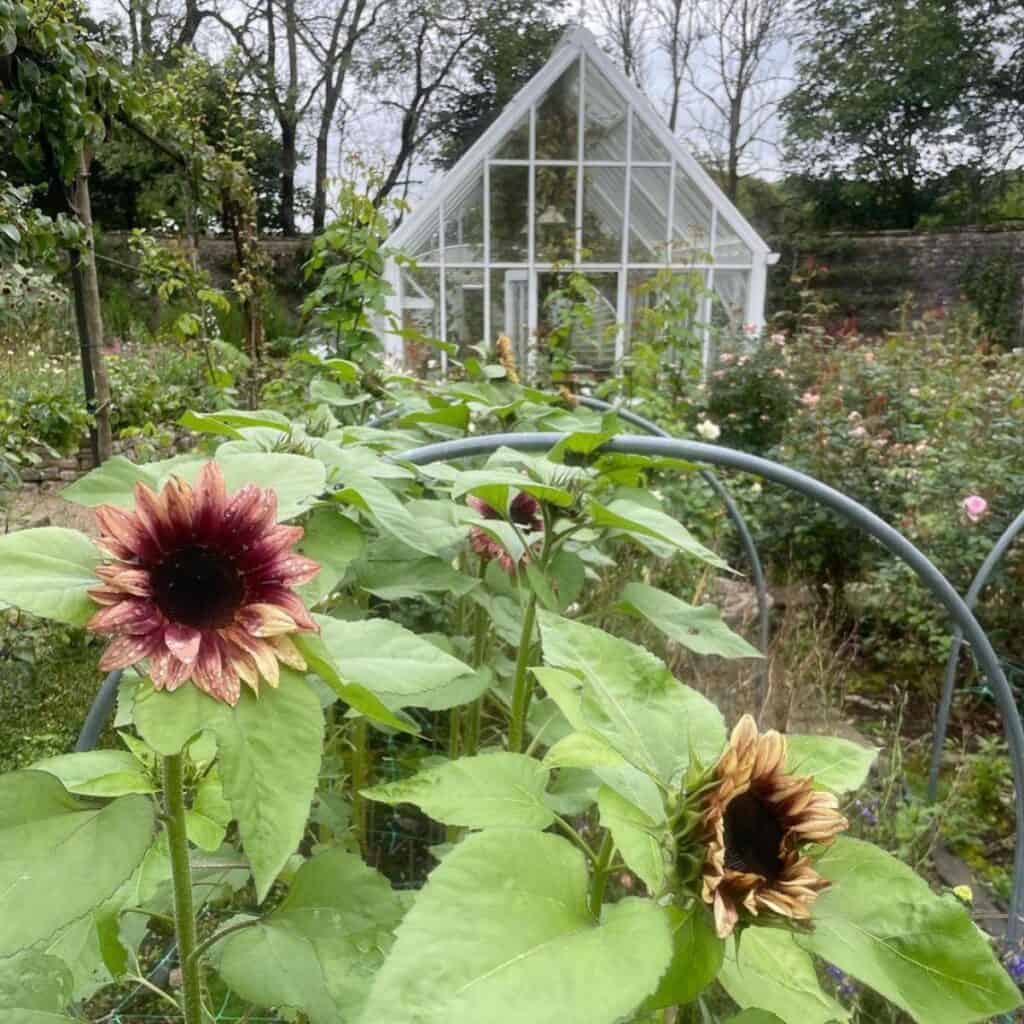

During the germination period, keeping the soil moist is crucial. Young seedlings need regular watering to promote strong root development.
Once established, reducing the frequency but increasing the watering depth helps the roots grow deeper, making the plants more drought-resistant.
Watering Methods
Using different watering methods can prevent waste and ensure that sunflowers get what they need.
Drip irrigation systems are effective, delivering water directly to the roots and minimizing evaporation.


If using a watering can or hose, aim directly at the base to avoid wetting the leaves, which can lead to fungal diseases.
For an easy method, fill a bucket with lukewarm water and let it slowly seep into the soil around the sunflower. This ensures the water penetrates deeply without running off.
Avoid overhead watering, which can cause mildew and mold on the leaves. Instead, focus on soil saturation to keep your sunflowers healthy and thriving.
Frequently Asked Questions


Understand the best conditions, suitable varieties for cut flowers, and effective growing strategies to get the most out of your sunflower growing experience.
What are the best conditions for growing sunflowers?


- Sunflowers thrive in full sun and well-draining soil. They need at least 6 to 8 hours of sunlight daily.
- The ideal soil temperature for germination is around 70°F to 75°F (21°C to 25°C). Good drainage helps prevent root rot and other water-related issues.
Which varieties of sunflowers are most suitable for cut flowers?


- Smaller varieties like Sonja and Sunrich are great for cut flowers. These types have sturdy stems and manageable flower heads.
- They also offer vibrant colors and long vase life. Dwarf sunflowers, such as Teddy Bear, are another popular choice for bouquets.
How can I ensure my sunflowers produce more blooms?


- To encourage more blooms, space your plants properly, usually 6 to 36 inches apart. Provide consistent watering, and do not let the soil dry out completely.
- Deadheading or removing spent flowers can also promote new growth and more blooms.
What type of fertilizer should I use for sunflowers, and how often?


- Use a balanced, slow-release fertilizer for sunflowers. Apply it at planting time and again midway through the growing season.
- Nitrogen-rich fertilizer can boost growth, but too much can limit blooming. Follow the instructions on the fertilizer package for best results.
What are effective strategies for growing sunflowers from seeds?


- Plant sunflower seeds directly into the ground after the last frost. Sow seeds about 1 inch deep and keep the soil moist until germination.
- Ensure good air circulation to prevent mold and fungal growth. Thin the seedlings to avoid overcrowding and allow proper development.
How can I grow taller and faster-blooming sunflowers?
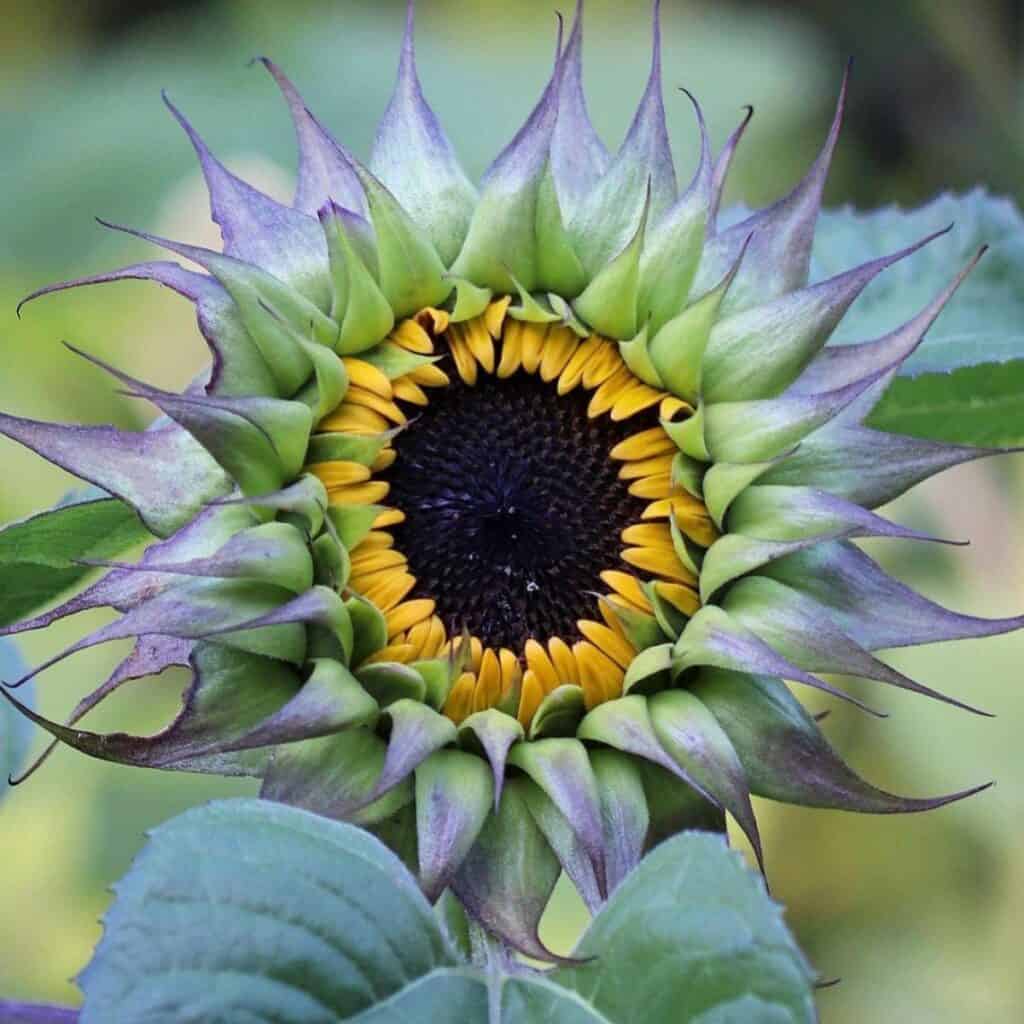

- Choose a tall-growing variety like Mammoth or American Giant.
- Start seeds indoors to get a head start on the growing season.
- Transplant seedlings carefully to avoid root disturbance.
- Regular watering and proper fertilization can also help sunflowers grow taller and bloom faster.




